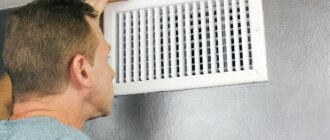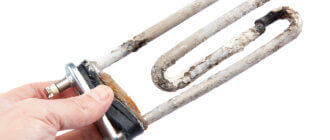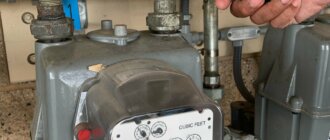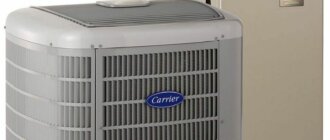Why Should You Care About a SEER Rating?
Are you tired of high energy bills and inefficient heating and cooling in your home? If so, it might be time to pay attention to your HVAC system’s SEER rating. What is SEER, you ask? It stands for Seasonal Energy Efficiency Ratio, a crucial measure of how efficient your air conditioner or heat pump truly is. By understanding the importance of this rating, you can make informed decisions about your HVAC system that will save you money and improve comfort levels in your home. So let’s dive into why you should care about a SEER rating!
What is SEER Rating?
SEER stands for Seasonal Energy Efficiency Ratio, which is a metric used to measure the energy efficiency of an HVAC system. Put simply, SEER rating tells you how much cooling power your unit provides per watt of electricity consumed over the course of a season. It’s like measuring fuel economy in miles per gallon (MPG) when buying a car.
The higher the SEER rating, the more efficient and cost-effective your air conditioner will be. Generally speaking, a high-SEER-rated unit can save you money on your monthly energy bills while also reducing your carbon footprint by consuming less electricity.
In fact, SEER ratings are required by law in many countries as part of efforts to reduce energy consumption and promote sustainable living practices. This means that manufacturers must provide accurate information about their products’ SEER ratings so that consumers can make informed decisions when purchasing new HVAC systems.
Understanding what SEER rating is and how it affects your home’s comfort level and bottom line is crucial for making informed decisions when investing in an HVAC system.
How SEER Rating is Calculated
SEER rating is an important factor to consider when choosing a new HVAC system. But have you ever wondered how this rating is calculated? Well, SEER stands for Seasonal Energy Efficiency Ratio and it’s based on the cooling output of your air conditioning system over the course of a season divided by the energy consumed during that same period.
To be more specific, SEER is calculated by measuring the total amount of heat removed (in BTUs) from your home during a cooling season and dividing that number by the total amount of electrical energy (in watt-hours) used by your air conditioner. The result gives you an idea of how efficiently your AC system can cool your home while consuming less electricity.
The higher the SEER rating, the more efficient your AC unit will be at cooling down your space while using less energy. This means lower utility bills and less impact on our environment!
However, keep in mind that there are other factors besides SEER rating to consider when choosing an HVAC system such as size, brand reputation, noise level, and installation cost.
Importance of SEER Rating
The SEER rating of your HVAC system is one of the most important factors to consider when purchasing a new unit. The SEER rating stands for Seasonal Energy Efficiency Ratio and measures how efficiently an air conditioner or heat pump can cool your home.
Energy Efficiency
A higher SEER rating means that the system is more energy-efficient, which translates into lower utility bills for homeowners. This is because high-efficiency systems require less energy to operate, resulting in lower electricity costs.
Cost Savings
In addition to reducing monthly energy bills, investing in a high-SEER-rated HVAC system provides long-term cost savings. Since these systems use less energy, they put less strain on the environment and are better for overall sustainability efforts.
How to Understand SEER Ratings
While it may seem complex at first glance, understanding SEER ratings isn’t difficult. The higher the number, the more efficient the system will be at cooling your home. For example, if you have a 16-SEER rated HVAC unit installed in your home versus an older 10-SEER model, you could save up to 60% on cooling costs!
Comparison of Different SEER Ratings
When comparing different models of AC units or heat pumps with varying efficiency levels (i.e., different Seer Ratings), consider not just upfront costs but also lifetime operating expenses. One way to do this would be by calculating the total cost over time using life cycle costing analysis methods.
Factors That Can Affect SEER Ratings
There are several factors that can affect the actual performance and efficiency level of an HVAC unit even if it has a high-rated Seer Rating – such as improper installation or poor maintenance practices over time.
Choosing an HVAC System Based on SEER Rating
Choose a newer model with a higher Seer Rating than what’s currently installed – especially if you’re experiencing issues like increased humidity levels around windows during hot weather months due lackluster performance from outdated equipment.
Tips to Improve Your HVAC System’s SEER Rating
Regular maintenance and upkeep
Energy Efficiency
Energy Efficiency is a crucial factor to consider when looking for an HVAC system with a high SEER rating. Simply put, energy efficiency refers to the ability of your HVAC system to provide the desired cooling or heating output while using as little energy as possible.
An HVAC system that has a higher SEER rating typically consumes less electricity compared to one with a lower SEER rating. This means that you can enjoy comfortable indoor temperatures without worrying about skyrocketing energy bills.
By investing in an Energy Star-certified HVAC unit, you can be assured of its high level of energy efficiency. These units meet strict guidelines set by the USA.
Environmental Protection Agency (EPA) and are designed to consume less power while maintaining optimal performance levels.
Regular maintenance and timely repairs also play an important role in ensuring your HVAC unit remains highly efficient. Dirty air filters, clogged ducts, and other issues may reduce airflow and cause your system to work harder than necessary leading to increased utility costs.
In summary, prioritizing energy efficiency when choosing an HVAC system can have significant benefits on both your wallet and the environment.
Cost Savings
One of the most significant reasons why you should care about a SEER rating is cost savings. A higher SEER rating indicates better energy efficiency, which translates to lower utility bills and long-term savings.
When you choose an HVAC system with a high SEER rating, it may cost more upfront but pays off in the long run with reduced operating costs. You can save hundreds or even thousands of dollars over the system’s lifespan by investing in one with a higher SEER rating.
Furthermore, newer HVAC systems are designed to be more energy-efficient than older ones. If your current HVAC system has a low SEER rating and is outdated, upgrading to a new model will result in substantial cost savings for you.
In addition to choosing an HVAC system with a high SEER rating, there are other ways to save on costs related to your heating and cooling needs. One way is by performing regular maintenance on your equipment so that it runs efficiently. Another way is by sealing air leaks around doors and windows or adding insulation where necessary.
Paying attention to your HVAC system’s SEER rate can lead to significant financial benefits over time while also reducing environmental impact through improved energy efficiency.
How to Choose an HVAC System Based on SEER Rating
Choosing the right HVAC system based on SEER rating is crucial for your home’s energy efficiency and cost savings. When selecting a new HVAC system, it’s essential to look at the SEER rating of each unit you are considering. The higher the SEER rating, the more efficient and cost-effective your HVAC system will be in terms of energy usage.
To choose an HVAC system based on SEER rating, consider factors such as the size and layout of your home, how many people live there, and what kind of climate you live in. If you live in a hot climate with high humidity levels or have a large family living in your home, then you may need an air conditioner with a higher SEER rating.
Another important factor to consider when choosing an HVAC system based on SEER rating is its price point versus long-term savings potential. While units with higher SEER ratings may come at a higher upfront cost, they often provide significant long-term savings through lower utility bills.
Ultimately, choosing an HVAC system based on its SEER rating requires careful consideration of both short-term costs and long-term benefits. Do thorough research before making any decisions about which unit best suits your needs by consulting trusted professionals who can guide you through this process effectively.
Tips to Improve Your HVAC System’s SEER Rating
Tips to Improve Your HVAC System’s SEER Rating
- Change your air filters regularly: Dirty and clogged air filters make your system work harder, which reduces its efficiency and increases energy consumption.
- Use a programmable thermostat: A programmable thermostat allows you to set different temperatures for different times of the day, so you can reduce energy use when you’re not home.
- Keep your outdoor unit clean: Debris such as leaves, grass clippings, and dirt can accumulate on the outside unit causing it to work harder than necessary; cleaning it regularly will help maintain efficiency.
- Seal ducts properly: Leaky ductwork can cause significant energy loss because conditioned air is lost before it reaches its intended destination; sealing ducts will ensure that the right amount of cool or warm air gets delivered.
- Schedule regular maintenance checks: Having a professional inspect and tune up your HVAC system annually helps keep it running efficiently and prolongs its lifespan.
By following these simple tips, you can significantly improve your HVAC system’s SEER rating which results in lower energy bills while ensuring optimal indoor comfort throughout the year.
Conclusion
Understanding and caring about the SEER rating of your HVAC system can have a significant impact on your energy efficiency and cost savings.
By choosing a higher SEER rated system, you can save money on your monthly utility bills while also reducing your carbon footprint.
When comparing different systems, make sure to consider factors such as size, insulation, and maintenance requirements that can affect the SEER rating. Additionally, taking steps to improve the efficiency of your current HVAC system through regular maintenance and upgrades can also lead to increased energy savings.
By prioritizing the SEER rating when selecting or maintaining an HVAC system in your home or business, you are making an investment in both financial savings and environmental sustainability. So take some time to research options and consult with experts in order to make informed decisions about maximizing your SEER rating for optimal energy efficiency.
Recent Queries:




